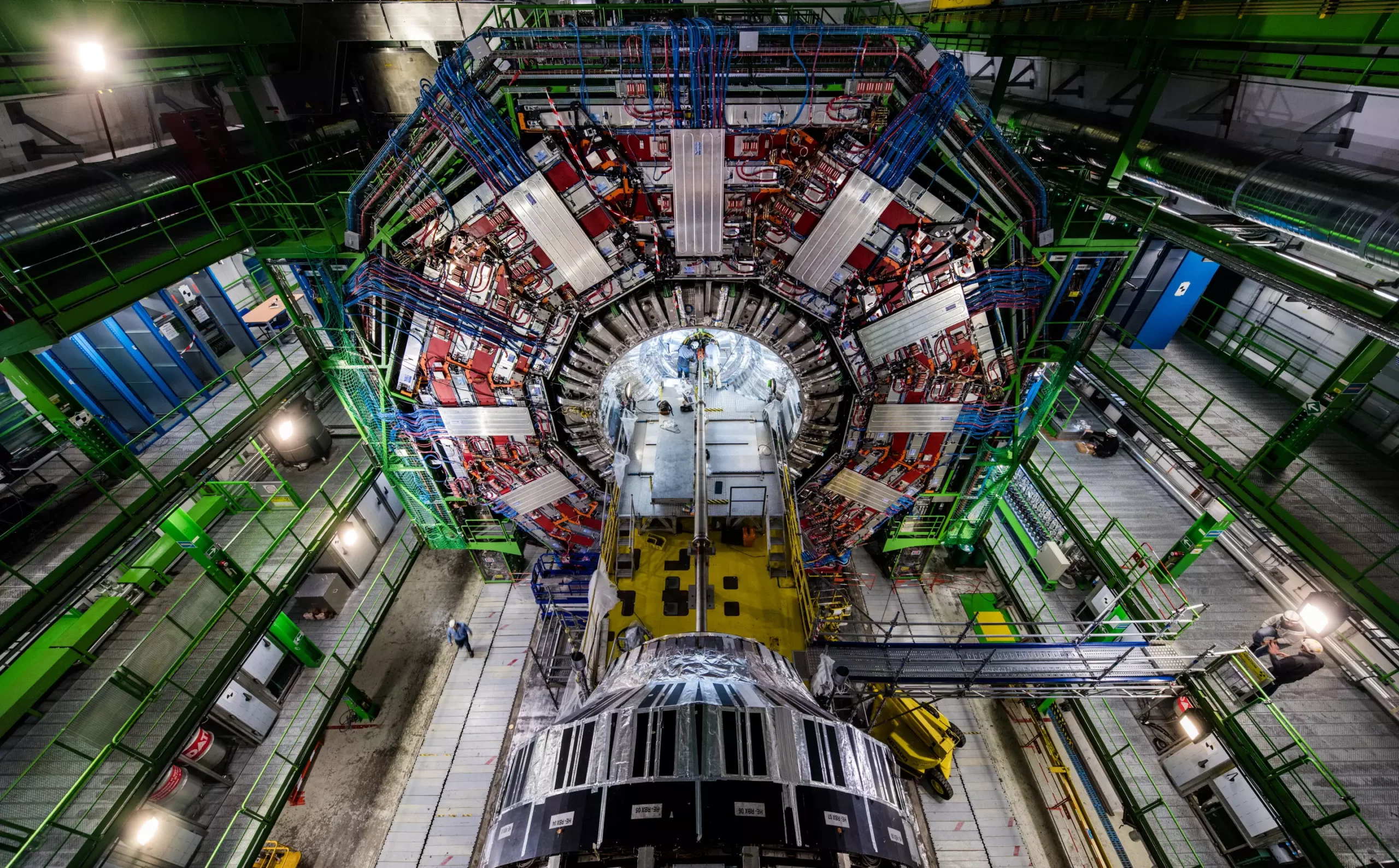In recent developments at one of the world’s most prestigious particle physics laboratories, scientists have unveiled groundbreaking results regarding the mass of the W boson, a fundamental particle integral to the Standard Model. The Compact Muon Solenoid (CMS) experiment at CERN’s Large Hadron Collider (LHC) has reported a new measurement that has far-reaching implications for our understanding of particle physics. This milestone comes after the Collider Detector at Fermilab (CDF) suggested earlier findings that sparked intense scrutiny and inquiry into the W boson’s properties.
The CMS’s latest method represents the most comprehensive and detailed investigation of the W boson’s mass conducted to date. With nearly a decade’s worth of rigorous data analysis, the CMS collaboration analyzed an extensive dataset comprising over 300 million recorded events from the 2016 LHC run, alongside 4 billion simulated events. What has emerged from this significant analysis is a measured W boson mass of 80,360.2 ± 9.9 megaelectron volts (MeV), closely aligning with the Standard Model’s expectations of 80,357 ± 6 MeV.
This remarkable discovery is not merely about confirming existing theories; it also represents a technological and methodological leap for particle physics. The new mass measurement is distinctive for its exceptional precision, achieving a level of accuracy that parallels the fine measurement of a four-inch pencil down to a fraction of a millimeter. As Patty McBride from Fermilab emphasizes, the precision achieved is a result of sophisticated techniques and meticulous attention to uncertainties in the data.
Unlike other experiments that have examined the W boson in the past, the CMS utilizes a compact design coupled with specialized sensors for muon detection and powerful solenoid magnets. These design features make the CMS particularly adept at precision mass measurements. McBride points out that the contribution of prior research from other collaborations has uniquely positioned CMS to push the boundaries of knowledge further than ever before.
Understanding the mass of the W boson is crucial for physicists as it has a direct impact on the framework of the Standard Model. Since the discovery of the W boson in 1983, its revelation has influenced the broader comprehension of particle interactions and the fundamental forces of nature. Essentially, the W boson mediates the weak nuclear force, one of the four known forces in physics, and understanding its mass can provide critical insights into the interrelation of particles, including the Higgs boson and the interplay of electromagnetism with weak forces.
Anadi Canepa, a key figure in the CMS experiment, asserts that any discrepancies in the measured W mass could signify the existence of new particles or forces beyond the Standard Model, thus holding immense potential for revolutionary discoveries in physics. Thus, the precision of the CMS W boson measurement not only affirms current models but also paves the way for theoretical exploration into the realms of beyond the Standard Model physics.
The measurement of the W boson’s mass is replete with complexities, primarily due to its decay products. Unlike other bosons, the W boson decays into products including neutrinos, elusive particles that interact very weakly with matter. The difficult task of measuring the W boson’s mass is compounded by the necessity of approximating the “missing” energy associated with undetected neutrinos. To address this, physicists have ingeniously simulated billions of collision events in order to better understand the nuances involved in these measurements.
Subtle factors such as the intricacies of the CMS detector mechanisms, even accounting for deformations as minute as the width of a human hair, play pivotal roles in the precision of these mass assessments. As Josh Bendavid from MIT explains, achieving high levels of precision necessitates a comprehensive understanding of the surrounding physical mechanisms at play during collisions.
The CMS team’s commitment to reducing uncertainties in their analyses represents a substantial advancement in the field. By incorporating authentic W boson data as opposed to relying solely on extrapolations from the Z boson, they have effectively redefined the standards for precision measurements in particle physics. This approach allows researchers to explore the nuances of theoretical physics without the added layers of assumptions introduced by past methodologies.
The precision achieved with this latest analysis lays the groundwork for tackling some of the most significant questions in contemporary physics regarding fundamental particles and forces. Such innovations not only highlight the ongoing evolution of particle physics research but also emphasize a collaborative spirit among scientific communities striving for a deeper understanding of the universe.
The recent revelations from the CMS experiment signify not merely a new measurement, but a profound step toward unraveling the complex tapestry of our universe’s fundamental forces and particles, offering a glimpse into the intricate workings of nature at the most elementary level.


Leave a Reply